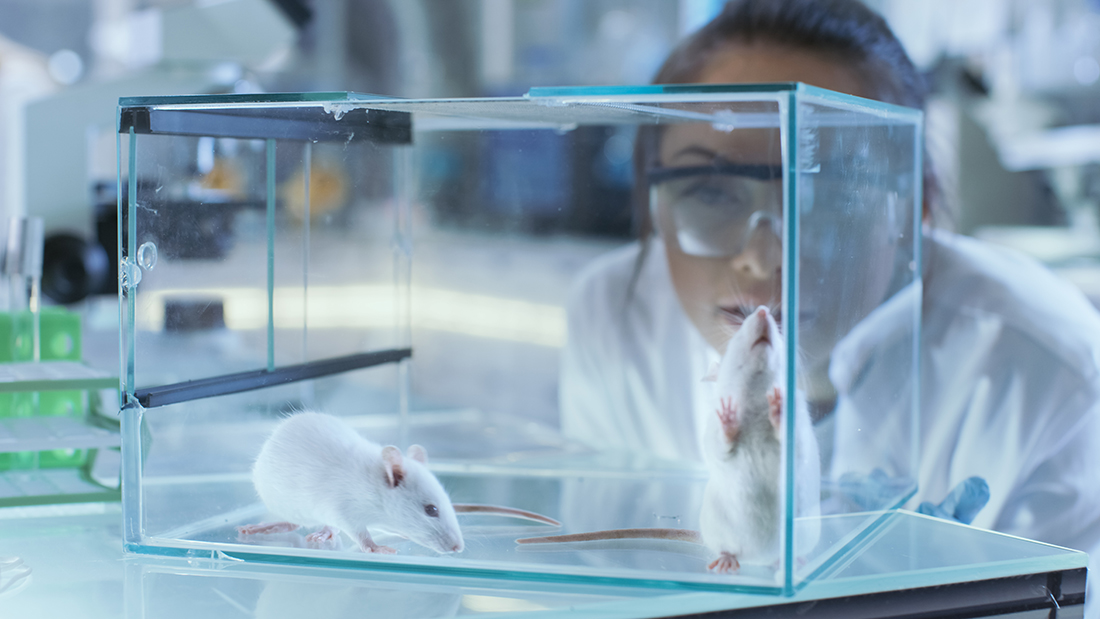Mice Used in Diabetes Research: Everything You Need to Know about this Important Research Model
March 1, 2019

Diabetes is a major health concern, both in the United States and globally. Research improves understanding of the mechanisms that lead to the development and progression of diabetes, and plays an essential role in the development of treatments, and perhaps someday, a cure.
Laboratory mice play an important, but often overlooked, role in diabetes research.
Laboratory Mice – an Important Part of Biomedical Research
There are four main techniques used in biomedical research: simulation, in vitro, human epidemiological studies, and whole animal models.
Chemical/mechanical/mathematical/computer simulations stimulate ideas about new research directions, so they are often most useful during the preliminary stages of a study. In vitro studies are useful for investigating the single effect of a substance in isolation, and therefore often used during the early and intermediate phases of a trial. Human epidemiological studies involve carefully staged clinical trials using informed human volunteers to test the safety and efficacy of new vaccines or medications.
Whole animal models, such as mice and pigs, provides the best surrogates for humans in the lab. Because these animals share the same cells, tissues and organs as humans, they offer the best indicator of how humans will react to a new diabetes drug or medical treatment.
Mice are the principle mammalian animal model used in human health research, particularly in diabetes research, for a number of reasons. Mice are attractive for use in the lab in general because establishing and maintaining a mouse research colony is relatively easy and inexpensive. Mice also have short lives and breed quickly, which gives researchers the opportunity to observe multiple generations at once or view the results of genetic changes over multiple generations in a short amount of time.
Mouse genes are easy to manipulate to achieve a desired condition. Certain conditions may be chemically or surgically induced for mouse studies. The endocrine system of mice is similar to that of humans, so mice can develop both type 1 and type 2 diabetes.
Autoimmune destruction of the pancreatic beta cells leading to lack of insulin production is the main characteristic of type 1 diabetes. A number of different mechanisms can cause this deficiency in animal models, including chemical ablation of the beta cells and breeding rodents that spontaneously develop autoimmune diabetes.
Insulin resistance is the characteristic feature of type 2 diabetes. Researchers can use mice to model type 2 diabetes in both non-obese and obese animal models that possess varying degrees of insulin resistance and beta cell failure.
Mouse Models Used in Diabetes Research
Researchers use a variety of mouse models to study diabetes, depending largely on the type of diabetes and the nature of the study. The non-obese diabetic (NOD) mouse is the most commonly used mouse in diabetes research. Because the NOD mouse develops type 1 diabetes spontaneously, this mouse serves as an excellent model for understanding the genetic and immunological causes and treatments of type 1 diabetes.
Researchers use several mouse models to study various phases of type 2 diabetes. The diet-induced obesity mouse mimics the most common cause of type 2 diabetes in humans, high-fat diets, and is helpful in studying pre-diabetes.
Obesity is one of the greatest risk factors for diabetes in humans, and like humans, certain strains of mice become obese when fed high-fat diets similar to the Western diet consumed in much of the developed world. Leptin regulates appetite, so any mutations in the leptin gene (Lep) or in its receptors (Lepr) can trigger unregulated feeding that result in obesity and the development of diabetes. Genetic background of the strain has a strong influence on the severity of diabetes Lepob and Leprdb (ob/ob and db/db, respectively).
Mice homozygous for obese and diabetes mutations, Lepob and Leprdb respectively, were the earliest mouse models in use and are still widely used for diabetes research today.
The KK-Ay mouse is useful for researching end-stage type 2 diabetes. This mouse shows obesity, insulin resistance, altered adipokine expression and dyslipidemia, so its metabolic status is similar to that of a human with diabetes. Obesity in the KK-Ay mouse is also driven by appetite (hyperphagia), but the mouse does not develop morbid obesity like the ob/ob and db/db mouse.
Genetically altered mice continue to be at the center of metabolic disease research, particularly in the realm of diabetes research, and diabetes research with mouse models will likely help more diabetes treatment options move out of the laboratory and towards the clinic.
For more information on mice used in diabetes research, consult with a biological products professional.

